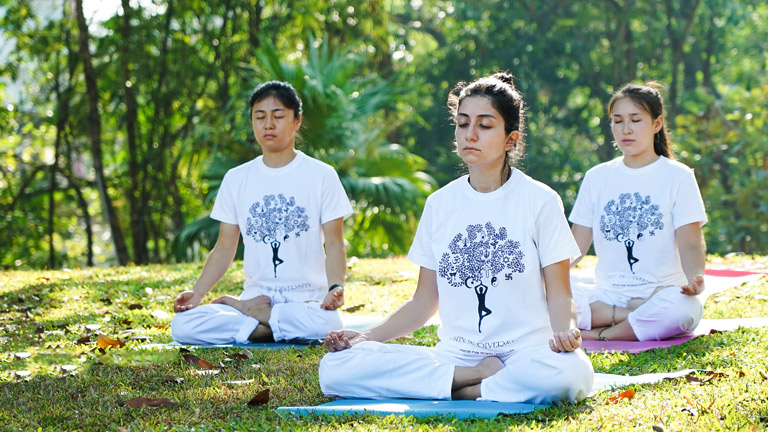


The discipline of yoga is a combination of asanas or bodily postures, breathing techniques, cleansing techniques and meditation. While the more traditional or classical forms of the discipline have continued to focus on the spiritual benefits of yoga, the discipline has evolved vastly.
Today, aspects of the yogic discipline associated with improving the body are the most popular. These aspects include “asanas”, “pranayama” and “pratyahara”. Pratyahara refers to the process of detaching oneself from one’s sensory surroundings. This can only be achieved when the focus of the mind is taken away from the numerous stimuli perceived by the sensory organs. Instead, the attention of the mind is turned inward. This is the meditative process.
While practitioners today do not lay emphasis on the classical definition of “pratyahara”, meditation is still widely practised. Meditation, as it is understood today, can be seen as a culmination of the internal aspects of yoga as they were traditionally defined.
The yogic discipline sees the merging of the individual with the higher consciousness as its goal. This is impossible if the yogi is constantly distracted by bodily or sensory desires. Hence, the yogi picks an object or idea of his/ her choosing and focuses solely on it. This may even be a simple name.
When an individual is able to sustain focus on the object or name chosen in the previous stage, dhyana is practised. Dhyana refers to meditation. In this stage, the yogi remains focused inward, and only on the singular object or name or idea.
Traditionally, during meditative yoga, the yogi is completely detached from the material world, and focused solely on the merging of his or her consciousness with a greater spiritual power. In modern terms, meditative yoga simply means that the individual is detached from worldly concerns and focused on stilling his/ her mind.